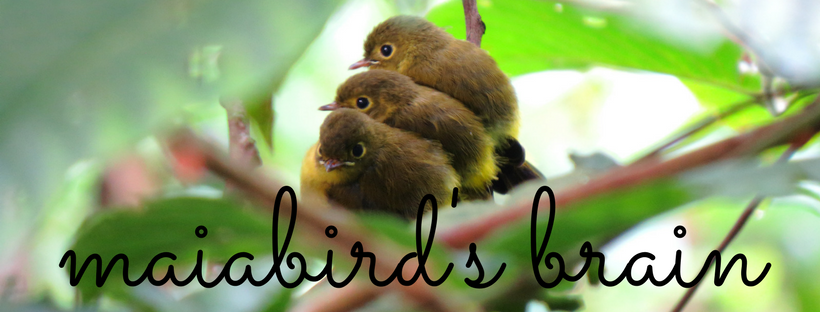We were able to see more or less 10 species in the short time we were there including Pied Bushchats (both male and females), Collared Kingfishesr, Richard's Pipits, and lots of White-breasted Woodswallows. More scouting around yielded a handsome White-throated Kingfisher, some Blue-throated Bee-eaters, and a couple of Large-billed Crows. Jon and I were able to see a small group of Elegant Tits flitting among some tall trees. I was thrilled to see them again! Additional birds we saw were a handsome male Blue Rock Thrush, a Philippine Pygmy Woodpecker that perched close and low near our group, and a flyby raptor.
Realizing it would be my last birding trip for the year, it got me thinking about my birding adventures in 2013. Looking back and studying my notes, I discovered that I was able to see 38 lifers (!) this year, some of them MEGA lifers! Not bad, since I know Jops and I slowed down on birding this year. Here's a quick rundown of some of our hightlights:
I never imagined I'd see a Brown Booby in Manila Bay, but I did last August! It was blown in by a storm raging the country at that time. The successful January twitch for the Green-faced Parrotfinches in Bataan was another mega lifer for me, knowing how difficult it already is to see this bird without any flowering bamboos.
 |
| Green-faced Parrotfinch One of our earlier successful twitches! |
Seeing two Philippine Frogmouths in two different locations this year was also a surprise for me and Jops, especially seeing one randomly in Timberland Heights last July. I thought we'd see this when we went to Bohol or Mindanao someday.
 |
| Philippine Frogmouths Left photo from Timberland Heights. Right photo from La Mesa Nature Reserve. |
We also got a number of good sightings in nearby La Mesa Ecopark, including the Spotted Wood Kingfisher and Indigo-banded Kingfisher. In March, we also got another successful twitch for the Brown-headed Thrush and even got an unexpected, bonus lifer that same morning: Eye-browed Thrush!
Of course, definitely worth mentioning are my two latest lifers from Candaba. We finally saw the Siberian Rubythroat after dipping on it twice! And we also got to see the Black-faced Spoonbills!
 |
| One of the three Black-faced Spoonbills that were spotted in Candaba |
Lifers aside, 2013 also brought me to places, old and new. I was able to go to Zamboanga City for the first time last February. I got to meet great and friendly people, bird in the Pasonanca Watershed and in Mt. Baluno, and also enjoy their wonderful food! I also got to see my first Bagras tree there =) In September, we were able to go to Coron, Palawan, share what we know about birdwatching and get lots of amazing lifers as well, it being the first time Jops and I would bird there.
 |
| My spark tree: Bagras! |
I was also able to revisit a number of great birding sites including: Olango Island, one of my favorite birding destinations ever, and Bangkong Kahoy Valley, another nearby place for awesome birding.
 |
| A rainbow over Olango Island, Cebu |
These are just snippets of the past year, with lots of adventures and heartaches in between. I am optimistic that 2014 will be a much better year than 2013. So, I close the year with gratitude for all the blessings which came in so many different forms, and leave behind all the negative things that have happened.
Here's to an amazing year ahead for all of us!
Happy New Year and wishing you all more lifers and adventures in 2014! =)








































